Commensal-driven immune zonation of the liver promotes host defence
- PMID: 33239787
- PMCID: PMC8691525
- DOI: 10.1038/s41586-020-2977-2
Commensal-driven immune zonation of the liver promotes host defence
Erratum in
-
Author Correction: Commensal-driven immune zonation of the liver promotes host defence.Nature. 2021 Sep;597(7874):E1. doi: 10.1038/s41586-021-03346-0. Nature. 2021. PMID: 34373651
-
Author Correction: Commensal-driven immune zonation of the liver promotes host defence.Nature. 2022 Nov;611(7935):E7. doi: 10.1038/s41586-022-05462-x. Nature. 2022. PMID: 36280745 No abstract available.
Abstract
The liver connects the intestinal portal vasculature with the general circulation, using a diverse array of immune cells to protect from pathogens that translocate from the gut1. In liver lobules, blood flows from portal triads that are situated in periportal lobular regions to the central vein via a polarized sinusoidal network. Despite this asymmetry, resident immune cells in the liver are considered to be broadly dispersed across the lobule. This differs from lymphoid organs, in which immune cells adopt spatially biased positions to promote effective host defence2,3. Here we used quantitative multiplex imaging, genetic perturbations, transcriptomics, infection-based assays and mathematical modelling to reassess the relationship between the localization of immune cells in the liver and host protection. We found that myeloid and lymphoid resident immune cells concentrate around periportal regions. This asymmetric localization was not developmentally controlled, but resulted from sustained MYD88-dependent signalling induced by commensal bacteria in liver sinusoidal endothelial cells, which in turn regulated the composition of the pericellular matrix involved in the formation of chemokine gradients. In vivo experiments and modelling showed that this immune spatial polarization was more efficient than a uniform distribution in protecting against systemic bacterial dissemination. Together, these data reveal that liver sinusoidal endothelial cells sense the microbiome, actively orchestrating the localization of immune cells, to optimize host defence.
Conflict of interest statement
The authors declare no competing interests.
Figures
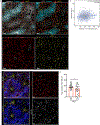
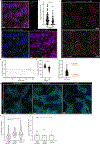
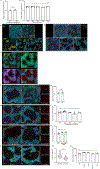

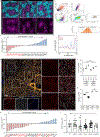








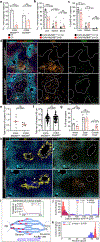
Comment in
-
Zones of immune defence in the liver.Nat Rev Gastroenterol Hepatol. 2021 Feb;18(2):81. doi: 10.1038/s41575-020-00403-3. Nat Rev Gastroenterol Hepatol. 2021. PMID: 33335281 No abstract available.
-
Sinusoidal Endothelial Cells as Orchestrators of the Gut Liver Immune Axis.Hepatology. 2021 Sep;74(3):1690-1691. doi: 10.1002/hep.31873. Epub 2021 Jul 20. Hepatology. 2021. PMID: 33928673 No abstract available.
-
Zone defence - the gut microbiota position macrophages for optimal liver protection.Immunol Cell Biol. 2021 Jul;99(6):565-569. doi: 10.1111/imcb.12476. Epub 2021 Jun 2. Immunol Cell Biol. 2021. PMID: 34080232 No abstract available.
References
Methods References
MeSH terms
Substances
Grants and funding
LinkOut - more resources
Full Text Sources
Other Literature Sources
Molecular Biology Databases

